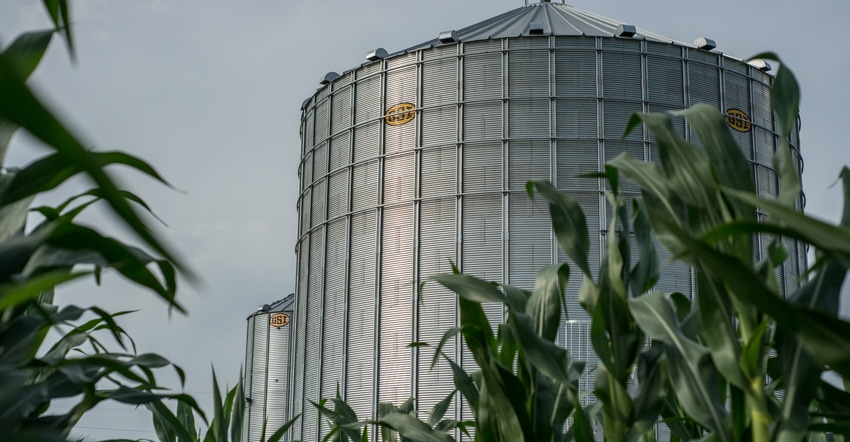
A clean, well-maintained grain bin is critical for safe grain storage. A problem in a bin last year can become a problem this year if proper steps aren’t taken to prevent it.
Gary Woodruff, GSI district manager in Indiana and Kentucky, is often asked about the keys to getting bins ready for the next year’s crop once the old crop is sold. He offers several tips to help get new grain to 50 to 60 degrees F or below as soon as possible. If the fan and vent system aren’t clear and working properly, the chances of grain going out of condition increases, he says.
Here are Woodruff’s seven steps for getting an empty bin ready to refill:
1. Put personal safety first. Never enter a bin without another person outside the bin. This is critical in case of an emergency.
Also, always wear the best dust and mold mask, and other equipment, available. This is often overlooked. The accumulative damage done to your lungs can’t be reversed. One method to reduce this issue is to position a small fan to pull air out of the inlet of the aeration fan. This doesn’t replace the need for a mask, but it will help keep dust and mold away from you as you work.
2. Keep the area around the bin clean. Clear away weeds and debris. They promote rodents and other pests nearby with easy access to bins. The cleaner the area is, the less pressure you will see from pests.
Using bait stations at the perimeter of the storage system can reduce rodent presence and damage to a minimum.
3. Maintain the bin’s structure. Check for rusted sheets or missing hardware and replace as needed. Often, surface rust can be wire-brushed and painted with a good high-zinc paint. This will not only keep the bin looking good, but also prevent serious rust damage.
Look for holes or other leaks and make sure they’re sealed. Check tie-downs. Don’t overtighten, particularly when the bin is empty, but make sure any nuts are hand-tight with no slack that would allow the bin to move or lift.
4. Inspect all mechanical equipment. Make sure it’s operable, lubricated and ready to go.
5. Clean bin surfaces. All surfaces that contact grain should be brushed or vacuumed. The goal is to remove infested grain and debris. Reachable aeration areas such as the fan and transition should also be cleaned.
6. Keep the area beneath the floor clean. It helps to use optional plenum doors opposite the fans to allow the area under the aeration floor to be blown clean once each year with high-velocity air from the fans immediately after the bin is full. Bins that have not had this yearly cleaning should be checked.
If debris has built up, take up the floor to clean beneath it. This debris harbors things that cause grain to go out of condition, and in extreme situations, it can fill the plenum area, stopping airflow to part of the bin.
7. Spray walls and floors with an approved insecticide. This should follow a thorough cleaning. The outer walls and an area 15 feet from the bin should also be sprayed with an insecticide.
It’s important to do these things once a year, as well as to do a quick check periodically, particularly for weeds and debris. Make sure your storage system is at its best to protect your investment in equipment and grain.
About the Author(s)
You May Also Like




